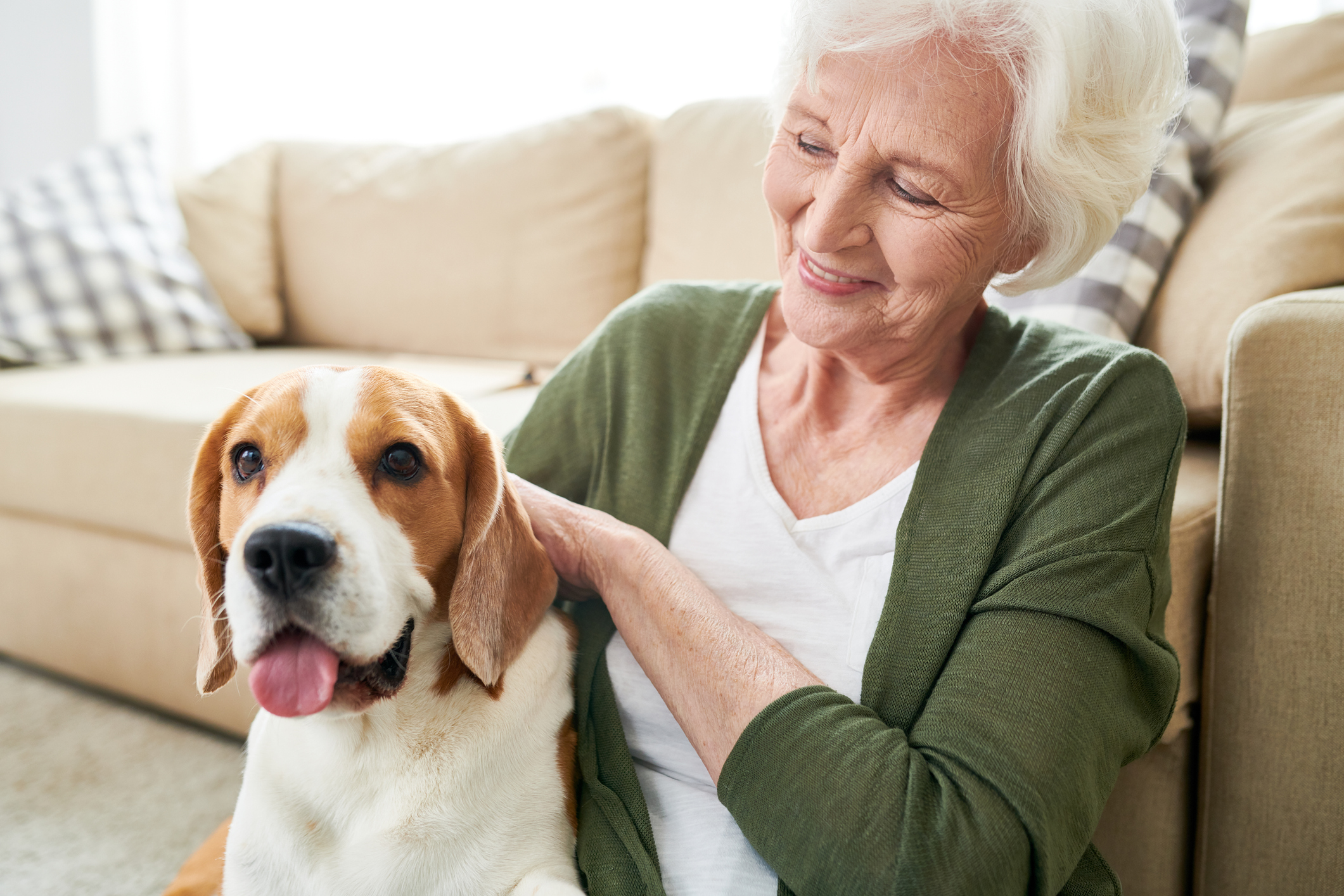How Pet Therapy Helps Older Adults
March 28, 2023 | Mental Health, Physical Activity, Senior living

People who enjoy pets such as cats and dogs know the special bond and warm feelings of interacting with them. So it’s no wonder that pet therapy is popular, including among older adults.
Pet therapy, also known as animal-assisted therapy (AAT), involves the use of trained animals to help improve the physical and emotional well-being of people. Pet therapy is increasingly being used with older adults as a way to reduce loneliness and social isolation. Typically the patient’s doctor or therapist arranges the service.
According to the National Institutes of Health, “Interacting with animals has been shown to decrease levels of cortisol (a stress-related hormone) and lower blood pressure. Other studies have found that animals can reduce loneliness, increase feelings of social support, and boost your mood.” Studies have found that pet therapy can also reduce symptoms of depression and anxiety.
Who might benefit from pet therapy? Healthline reports that it’s used for:

- People undergoing chemotherapy
- Residents in long-term care facilities
- People hospitalized with chronic heart failure
- Veterans with post-traumatic stress disorder
- Stroke victims and people undergoing physical therapy to regain motor skills
- People with mental health disorders
Many different types of animals are used in pet therapy, including dogs, cats, rabbits, and even birds. The key is that the animal is well-trained and comfortable around people.
The benefits of pet ownership
Of course, just having a pet at home can provide the same benefits for older adults, such as:
- Reducing loneliness and social isolation. As the National Institute on Aging notes, “pets can be a source of comfort and companionship, especially for older adults who live alone.” It’s important to remember, though, that pets don’t entirely replace the need for human interaction.
- Potential heart-health benefits. The American Heart Association notes that “studies have shown that pet owners have lower blood pressure and cholesterol levels, and a lower risk of heart disease.”
- Physical activity. Having a pet may involve more opportunities for physical activity. Walking a dog, for example, can provide a low-impact form of exercise that can improve mobility and strength. Those outings also get the older adult outside into fresh air, and may possibly spark social interaction.
Safety tips
Any older adult who is considering owning a pet should remember these safety tips:
Choose a pet that is a good match for your lifestyle: If you have mobility issues or other health concerns, you may want to choose a pet that requires less maintenance, such as a cat or small dog. Make sure you are able to care for your pet’s needs and that your pet is a good match for your lifestyle.
Keep your pet safe: Make sure your pet is supervised at all times and kept away from potential hazards, such as toxic plants or household chemicals.
Keep yourself safe: If you have mobility issues or are at risk of falling, consider using pet gates or other barriers to keep your pet from getting underfoot.
Plan for emergencies: Make sure you have a plan in place for what to do with your pet in case of an emergency or if you are no longer able to care for it. This could include arranging for a family member or friend to care for your pet, or finding a pet-friendly assisted living facility if necessary.
One other noteworthy benefit of pet ownership: According to the American Heart Association, “pet owners even tend to live longer than non-pet owners.”

